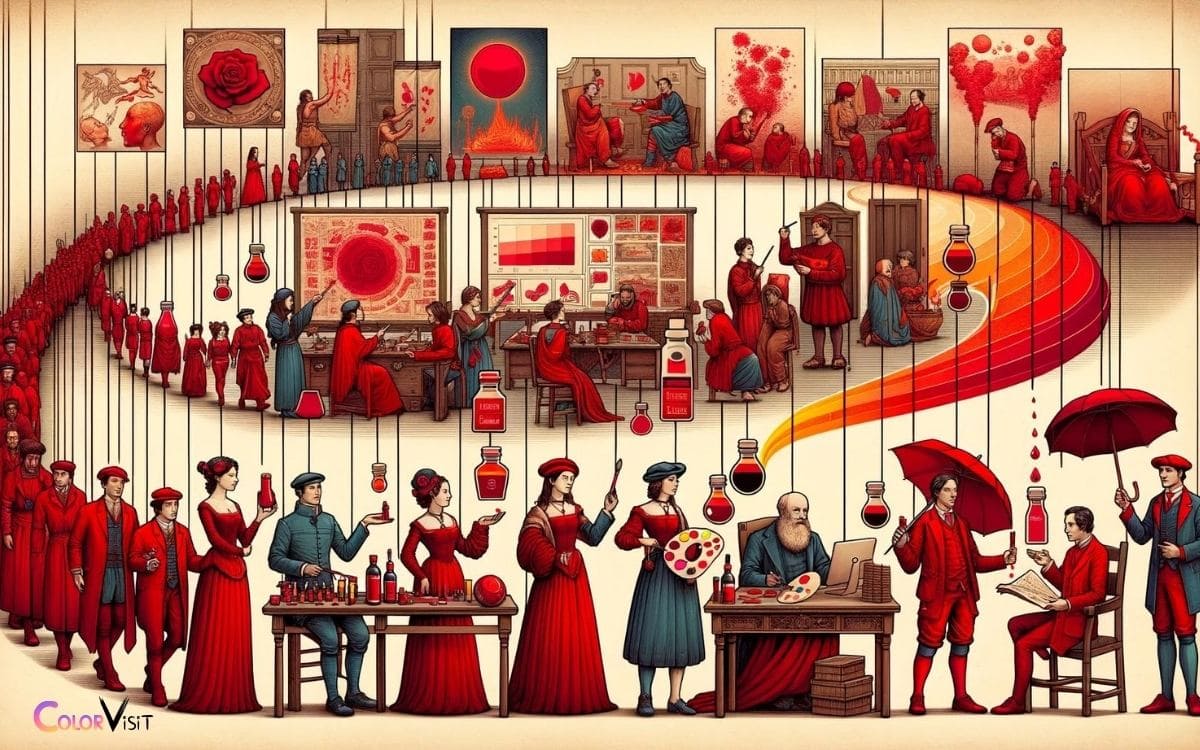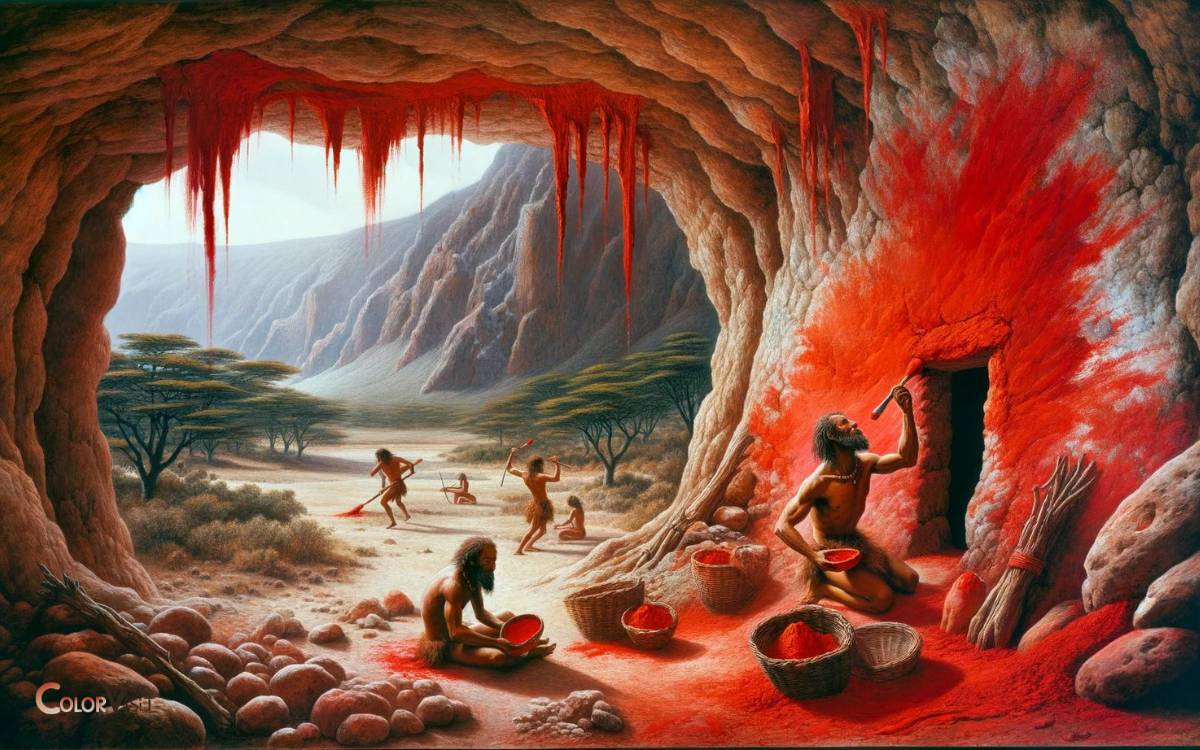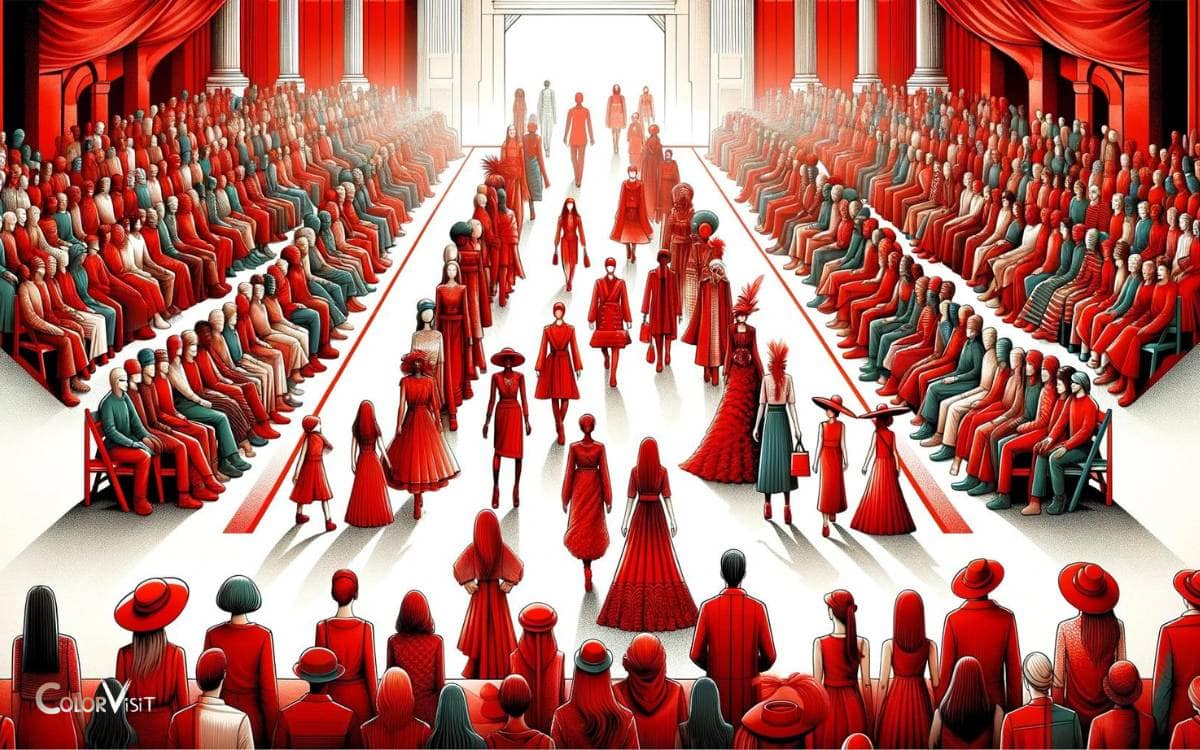History of the Color Red: Extensive!
The history of the color red is both extensive and influential, spanning thousands of years and playing a significant role in various aspects of human culture, including art, fashion, and religion.
Its symbolic associations with power, passion, and revolution have profoundly impacted societies throughout history.
The color red has been a prominent part of human civilization from its primitive beginnings to the present day.
In prehistoric times, it was used in cave paintings, symbolizing life and fertility. As societies developed, red continued to be a powerful symbol, representing power, passion, and revolution.
For example, in Roman times, red was a symbol of power and was used in military uniforms and banners.
In modern times, the color red has maintained its symbolic importance in areas like fashion, where it’s often associated with boldness and passion.
Key Takeaway
Prehistoric Use of Red Ochre
During prehistoric times, red ochre was used by early humans as a pigment for various purposes, marking a significant early use of the color red in human history.
- This natural earth pigment was used not only for its aesthetic properties but also for its symbolic significance in rituals and ceremonies.
- The use of red ochre in prehistoric pigments has been found in various archaeological sites, suggesting its importance in early human cultures.
- The color red held deep symbolic meaning for these ancient societies, often representing vitality, strength, and power.
- It was used in various symbolic rituals, possibly related to hunting, fertility, or spiritual practices.
The utilization of red ochre as a pigment in prehistoric times provides valuable insights into the early human understanding of color and its role in symbolic expression and cultural practices.
Symbolism of Red in Ancient Civilizations
The symbolism of red in ancient civilizations encompassed profound cultural and spiritual significance.
Red in folklore and mythology played a pivotal role in shaping societal beliefs and practices.
Here are five key aspects of the symbolism of red in ancient civilizations:
- Life and Vitality: Red symbolized life, vitality, and energy in various ancient cultures.
- Power and Authority: The color red was often associated with power, authority, and leadership in ancient societies.
- Sacred Rituals: Red was used in sacred rituals, symbolizing protection, purification, and spiritual connection.
- Love and Passion: Ancient civilizations often associated red with love, passion, and romance, influencing cultural expressions of affection and desire.
- War and Conflict: The color red held symbolic significance in representing war, conflict, and victory in ancient mythologies and folklore.
The symbolism of red in ancient civilizations continues to fascinate and inspire contemporary perspectives on culture and spirituality.
Red in Art and Religion
Red’s significance in art and religion extends beyond ancient civilizations, influencing the portrayal of spiritual themes and artistic expressions across diverse cultures and periods.
- In religious art, the color red often symbolizes strong emotions, such as love, passion, and sacrifice, as well as divine power and the presence of the sacred.
- This symbolism is evident in the use of red in religious paintings, sculptures, and architecture.
- In art, red has been utilized to evoke a range of emotions and convey powerful visual statements.
From the vibrant red hues in traditional Chinese paintings to the bold, expressive strokes of red in modern abstract art, the color continues to captivate and inspire innovation in artistic expression.
The table below provides a glimpse of the diverse ways red is used in religious art and the symbolism associated with it:
| Red Symbolism | Examples in Religious Art |
|---|---|
| Love and Passion | Depiction of martyrs and saints |
| Divine Power | Use of red in religious architecture |
| Sacrifice | Representation of religious rituals |
Red in Fashion and Culture
Red is a prominent and influential color in both the fashion industry and various cultural traditions. It has a significant impact on fashion and cultural expressions.
- Red carpet: The red carpet symbolizes glamour and prestige, often associated with high-profile events and celebrities.
- Red lipstick: A timeless fashion statement, red lipstick exudes confidence and power, making it a symbol of femininity and boldness.
- Traditional clothing: Many cultures incorporate red into their traditional attire, representing different meanings such as luck, prosperity, and joy.
- Fashion trends: Red has been a recurrent color in fashion trends and is often used to make a bold and daring statement.
- Cultural symbolism: In various cultures, red holds symbolic significance, representing love, passion, and vitality.
The influence of red in fashion and culture is undeniable and continues to shape trends and traditions.
This influence extends beyond aesthetics, delving into the political and social meanings of red.
Political and Social Meanings of Red
Emanating from historical revolutions and contemporary political movements, the color red holds diverse and potent symbolic significance in the realm of politics and society.
Its association with political symbolism and revolutionary movements has made it a powerful emblem of change, passion, and courage.
The table below illustrates the multifaceted meanings of red in the political and social spheres:
| Symbolic Meaning | Representation |
|---|---|
| Revolution | Overthrow of the old regime, pursuit of societal change |
| Courage | Resilience, willingness to confront adversity |
| Passion | Intensity of emotion, fervor for a cause |
| Sacrifice | Bloodshed for a greater purpose, solidarity in struggle |
The use of red in political and social contexts continues to evolve, reflecting the innovative spirit of movements and the enduring relevance of its symbolism in the pursuit of societal transformation.
Conclusion
The color red has a rich and diverse history. It has been used since prehistoric times in cave paintings and has held symbolic meaning in ancient civilizations.
Additionally, red has played a prominent role in various aspects of human society. It has been a significant element in art, religion, fashion, and culture.
Furthermore, the color red carries political and social meanings. It has been associated with passion, power, and vitality across different cultures and societies.
Overall, the color red has left an indelible mark on human history, like a vibrant tapestry woven through time.






